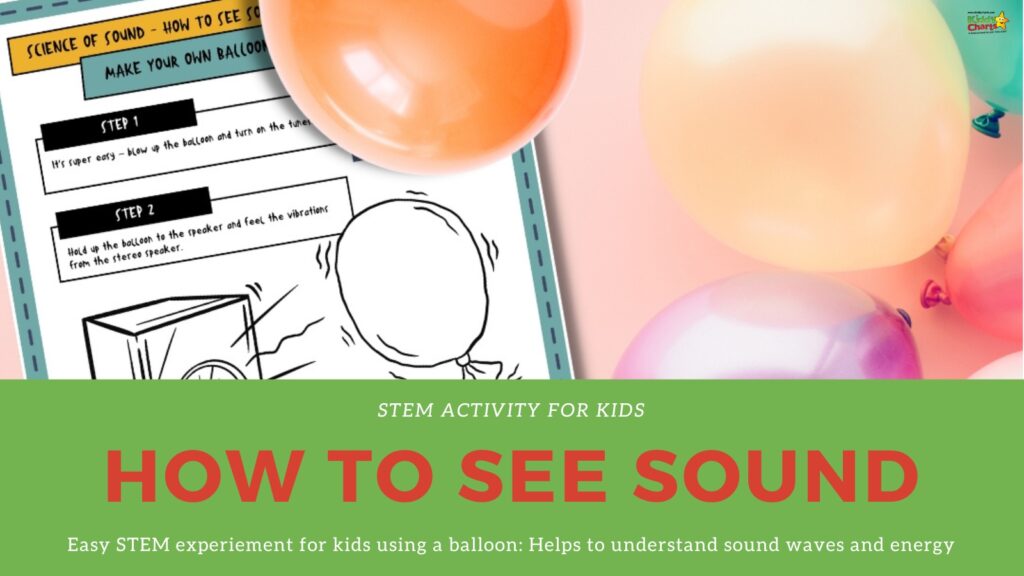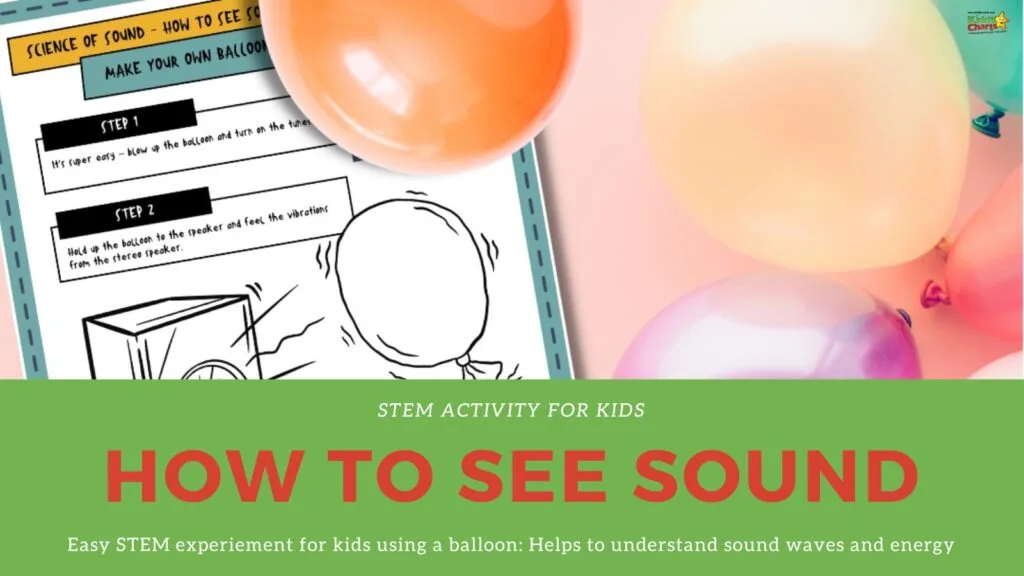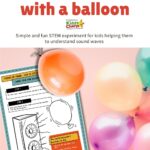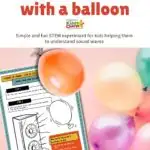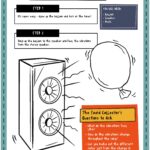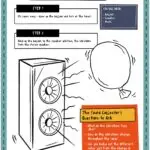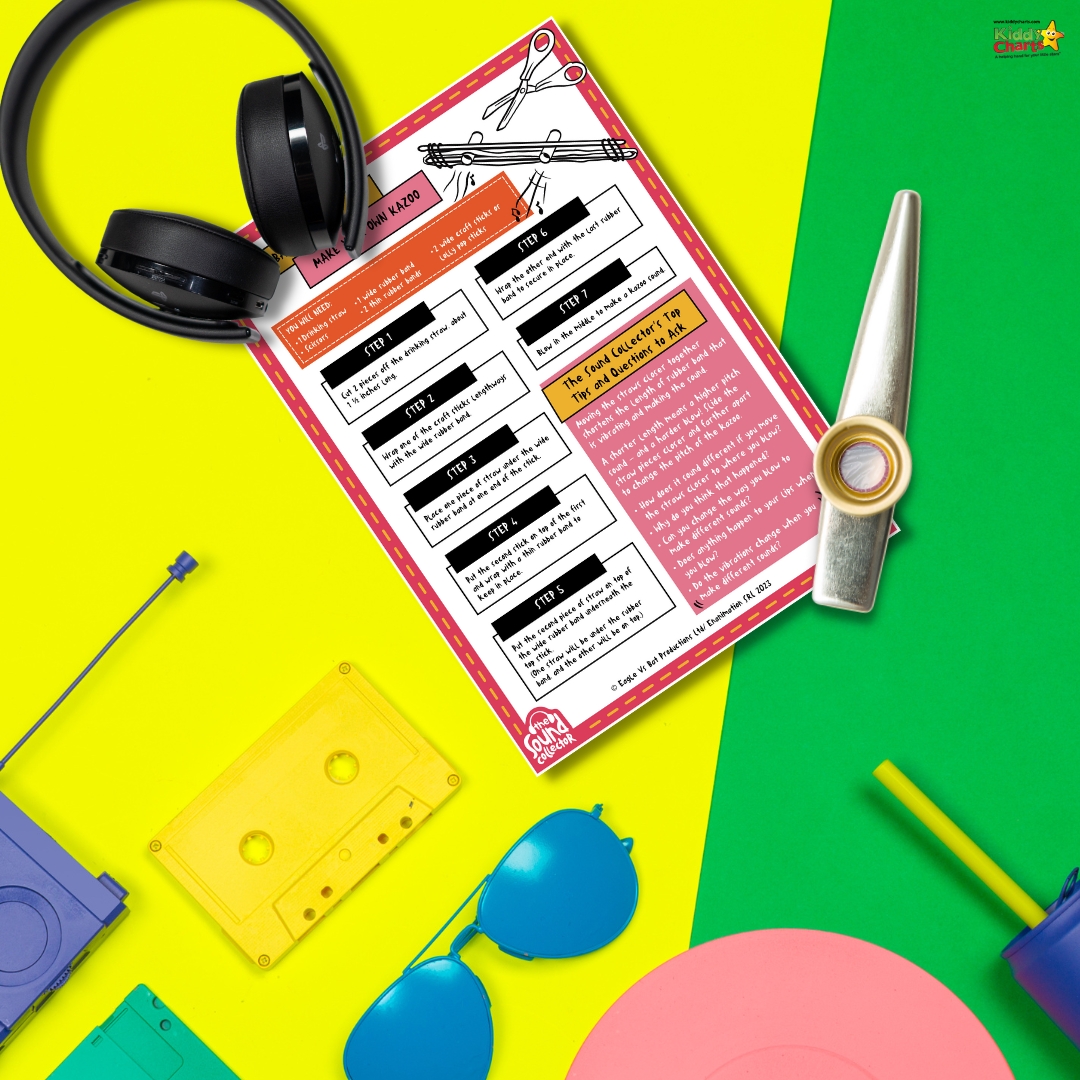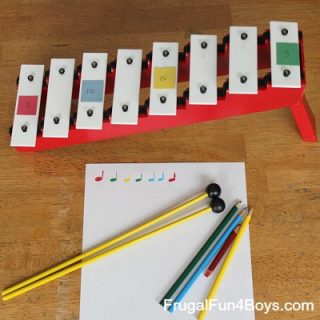Have you ever wondered what sound looks like? Kids are always full of curious questions about the world around them, and it’s our job as parents or teachers to introduce them to the wonder of science. In article, we’re going to show you a fun and easy experiment that helps kids visualise sound waves. With just a balloon and a speaker – you can “see” the sound. Who knew this was possible, and how to see sound with a balloon was so simple?
This experiment is a great way to get kids interested in science and give them a hands-on experience of how sound works.
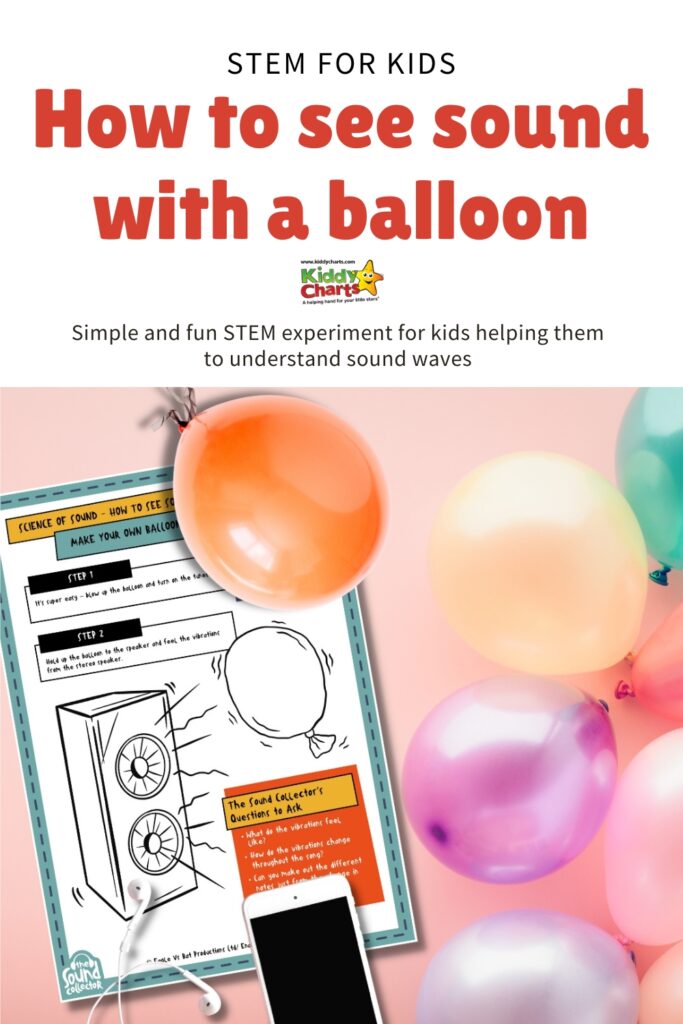

We have a range of articles from The Sound Collector on the site, all looking at different ways that kids can enjoy and understand sound and music. Do check out the ITV program; it is a charming, and inclusive, program for your kids.

Watch this video on YouTube
How to get your balloon speaker up and running!
- First, blow up a balloon and tie it off.
- Place your balloon next to the speaker. You can use any kind of speaker, whether it’s on your phone, a big speaker, or even your computer.
- Next, turn up the volume and let the sound waves do their magic.
It really is that simple to be able to see sound!
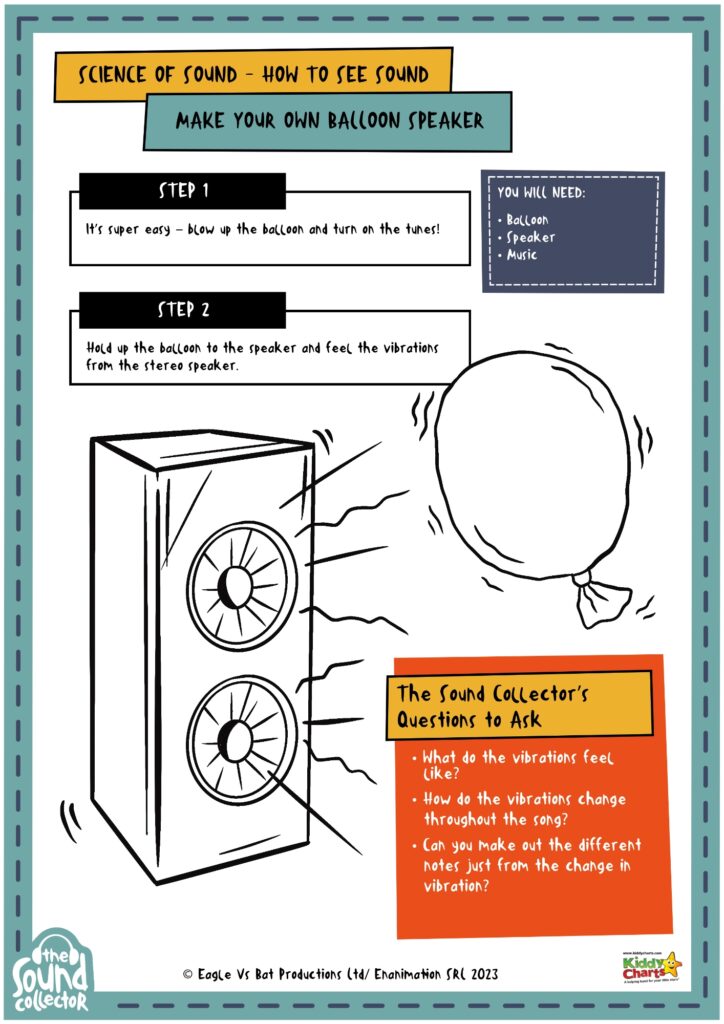
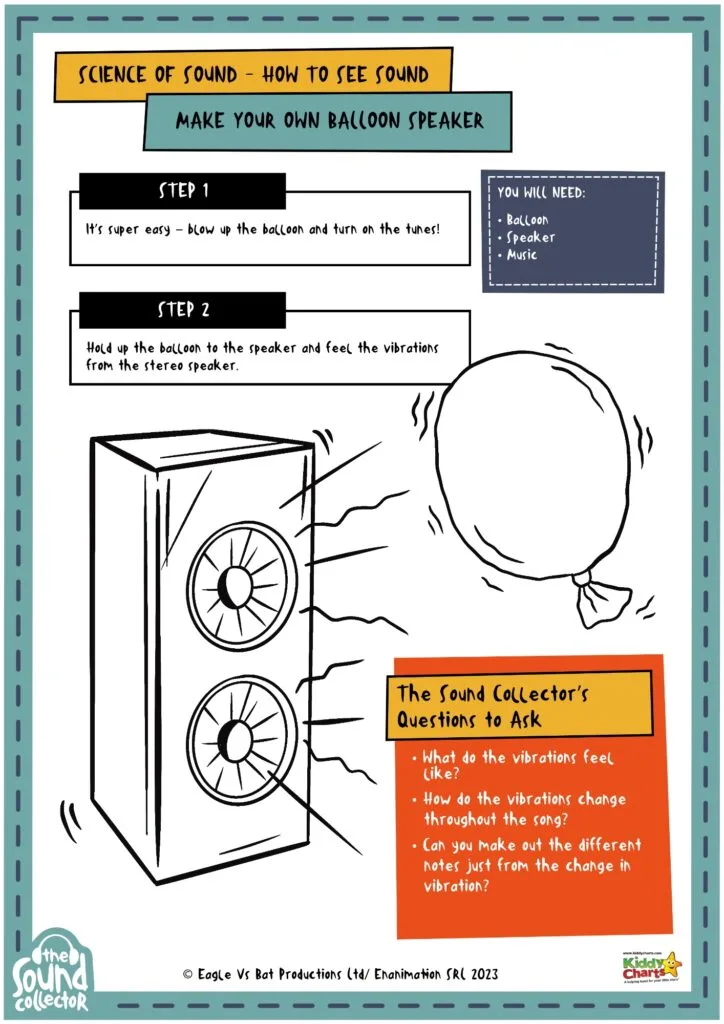
We haven’t even bothered to give you a list of what you need because it is so easy: just a balloon, a speaker and some music!
There are a few things that you can do to make this interesting too.
For example, try changing the volume or type of sound you play and observe how it affects the balloon’s movement.
You can also try different size balloons or speakers to compare the results.
Ask your child, “Do you see the difference in how the balloon moves with a low volume versus a high volume?” Or, “Does the balloon move differently when we play music versus a voice recording?”
There are some questions within the activity sheet to ask, as well as some more here to extend the activity for your kids:
Some more questions to ask about sound when doing this activity
After asking about the volume, what about:
Why does the balloon move in specific ways?
You can explain to your child that different types of sounds have different frequencies, which determine the speed and intensity of the sound waves.
Lower frequency sounds, like bass, produce bigger waves with longer wavelengths while higher frequency sounds, like treble, produce smaller waves with shorter wavelengths.
What is sound energy?
Finally, how about using this to introduce kids to the concept of sound energy? Every time the balloon moves, it requires energy transfer from the speaker to the air inside the balloon. You can explain to your child that sound energy is responsible for causing vibrations, which create sound waves, and it’s all around us, whether we can see it or not.
To download this activity sheet, check out the button and image below:

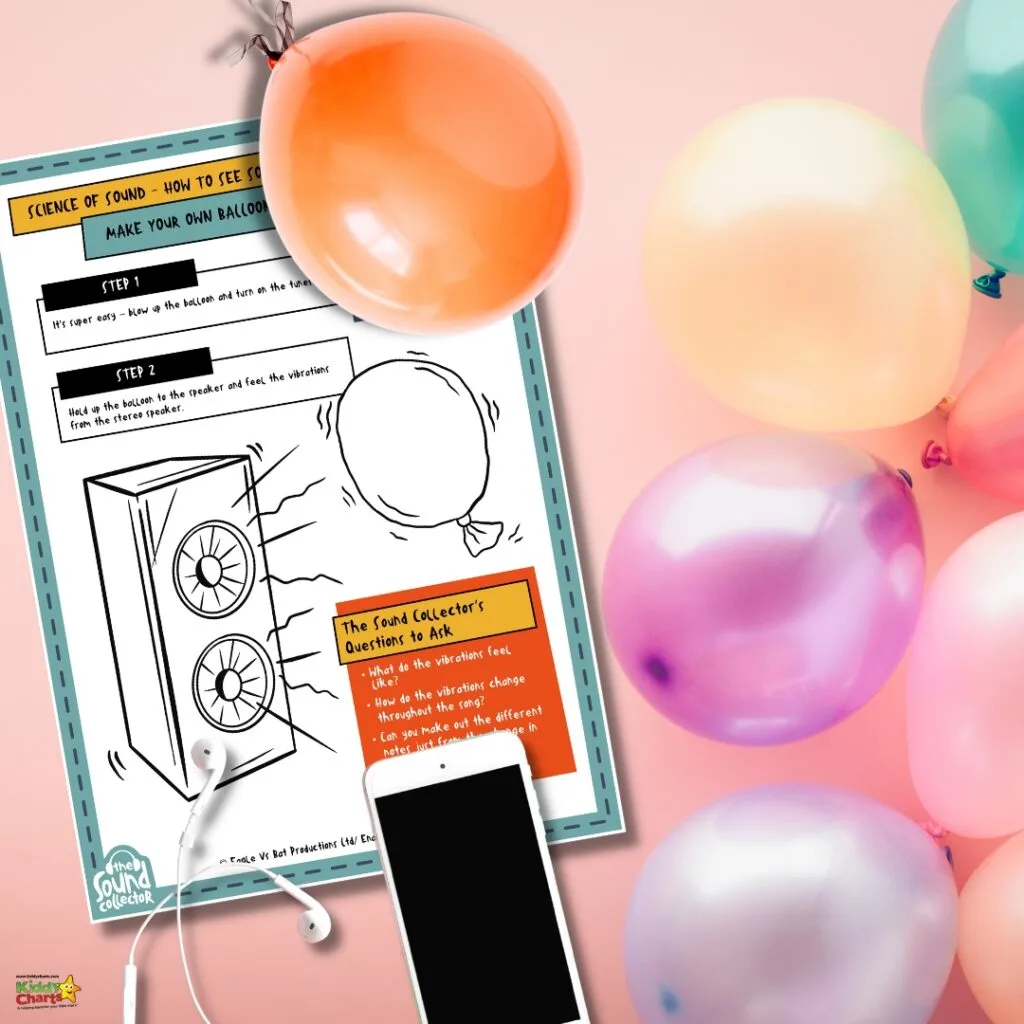
Conducting this simple experiment is a fun way to help kids of all ages explore and understand the science of sound. Not only does it give them a visual representation of how sound works, but it also encourages them to ask questions, form hypotheses, and experiment with different variables. Try it out at home with your little ones and see if they can “see” the sound today!
If you are after other musical and STEM activities, then check out these ideas as well from us here at KiddyCharts:
Other musical crafts and articles on the KiddyCharts site
Here are some more musical articles and crafts from the site. Check them out now.
DIY kazoo: How to make your own kazoo today
Find out how to make a kazoo from things you have at home!
6 reasons why playing music helps your child
Why playing music to your kids is awesome, and you need to keep doing it.
Musical instruments for kids: 8 reasons why they should learn
Reasons why learning a musical instrument is really good for your kids if you can get them to sit still long enough 😂
And here are some thoughts from off site too:
Music Activity Ideas
If the Amazon Unlimited Music offer isn't for you - why not try some of these activities around music....
50+ Incredibly Creative Music Activities for Kids
50 tips should be very helpful for you if you are looking for some creative music activities for your kids.
5 Best Music Activities for Kids aged 0-5!
Get kids involved in music activities as early as possible to develop their intelligence. Here are 5 best music activities to help.
Composing Music with Math Activity for Kids
Learning both music and mathematics? Check out this activity idea.
If you like what you see – sign up too!
Thanks so much, as always, for coming to see us, and do remember to check us out regularly if you can.
Helen
